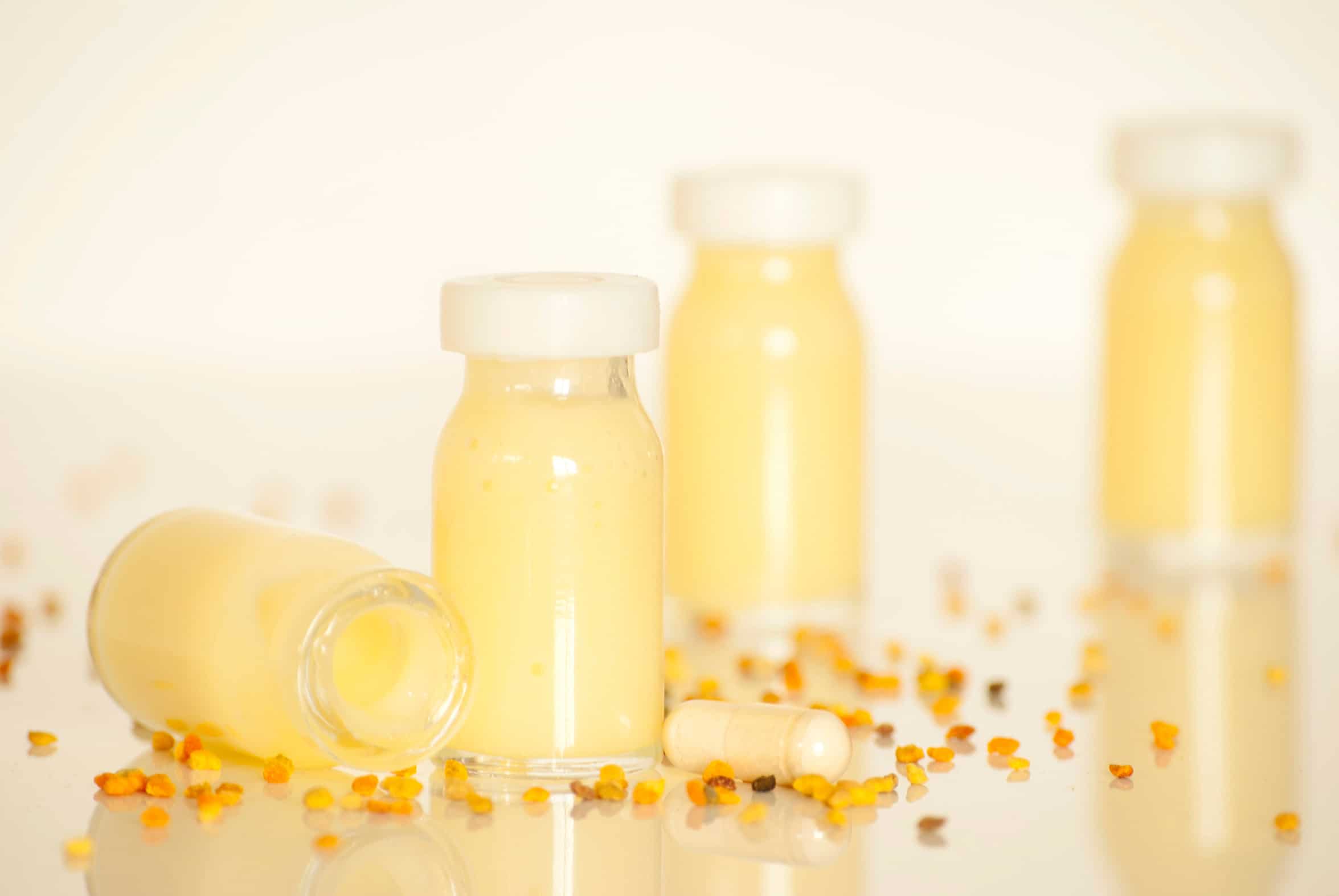Royal jelly

Royal jelly, queen bee food or queen food, is the food with which bees feed their queens. This secretion from the head glands is fed to bee larvae during the first three larval stages. After that, worker bees are fed mainly pollen and honey. Queen larvae, on the other hand, are fed royal jelly until they reach maturity.
Royal jelly is obtained in specialised apiaries by removing the queen from a bee colony and inserting prefabricated queen cells into the hive. In order to isolate the food substance, the queen larvae must be removed after three days. In one bee season, a beekeeper can get a bee colony to produce approximately 500 g of royal jelly.
Removing the queen causes extreme stress for the colony and massively disrupts its balance, which is why beekeepers who work in harmony with nature generally reject the production of royal jelly.
Royal jelly, like propolis, is used as a raw material for pharmaceutical and cosmetic preparations, but is legally classified as a foodstuff.
It contains carbohydrates, protein, B vitamins and trace elements, among other things.
The most important ingredients are:
- 10-23% sugar
- 60-70% water
- 9-18% proteins and amino acids
- 4-8% fats
- Thiamine, riboflavin, pyridoxine, niacin, pantothenic acid, biotin, folic acid, sterols, biopterin and neopterin, minerals and trace elements.
- P-hydroxybenzoic acid methyl ester as a natural preservative
We believe that the vitamins and amino acids found in royal jelly can also be added to cosmetics. We therefore refrain from using natural royal jelly in high-quality natural cosmetics.
We recommend these substitutes
However, it should be viewed critically in terms of sustainability, price stability and, in some cases, its allergenic potential. Depending on the desired cosmetic effect, you will find our recommendations for alternative active ingredients below:
1. Anti-ageing and cell regeneration:
Peptides (e.g. Matrixyl®, Syn®-Ake, Copper Peptides): These stimulate collagen and elastin production and have a skin-smoothing effect.
Low molecular weight hyaluronic acid: Penetrates deeper, provides hydration and reduces wrinkles.
Niacinamide (vitamin B3) improves the skin barrier, has a balancing effect and strengthens the skin structure.
2. Nutrient supply and revitalisation:
Aloe vera extract: moisturising, anti-inflammatory.
Panthenol (provitamin B5): regenerating, soothing, promotes cell regeneration.
Amino acid complexes cover the ‘protein-like’ function of royal jelly.
3. Luxury and “prestige” alternatives
If the storytelling character is in the foreground (similar to royal jelly with its ‘queen image’), exclusive plant-based active ingredients can be used.
– Caviar extract (plant-based or marine)
– Truffle extract
– Fermented plant extracts (a trend from K-Beauty)
– Superfood extracts (acai, goji, Neoberry®).
Sources
- Christof Hahn – Beekeeping https://www.imkerei-hahn.de/
- Our own experience